Omnichannel Retailing
Omni-channel Retail Solutions & Strategy
Omni-channel retailing is across all channels, as the name suggests. It is a fully-integrated approach to retail commerce, that unifies shopper experience across offline and online channels or touchpoints. Ideal omni-channel shopping ranges across brick-and-mortar locations to mobile sites, an e-commerce marketplace, social media, retargeting and all aspects in between. Is retail omni-channel? While the channel’s true potential is only obvious when the way of selling is integrated, the future omni-channel retail strategies point to the growing value of the click-and-mortar/brick and click model. Multichannel management is not only about a presence on multiple channels. Mobile, merchandising, marketing, marketplaces, and fulfillment – all of these need to be considered if the omni-channel retail strategy is adopted. Retailers with physical, as well as digital presence offer seamless, quality customer experiences within and between contact channels. Delivering a consistent experience across online and offline channels means consumers are set to interact with the business using omni-channel retail technology and platforms.
Benefits of Omni-channel
- Greater Acceptance from Shoppers
Research estimates reveal omni-channel retail customers use apps for price comparison or discount deals, along with in-store digital tools like tablets, price checkers or interactive catalogs. Omni-channel customers spend 4% more time shopping in-store and 10% more on virtual stores as against single-channel consumers.
- HIgher Customer Spend
The more channels customers used, the more they spend. Estimates show customers using 4 or more channels spent 9% more in stores compared to single channel clients. Research also found retailers using omni-channel retail marketing strategies saw a transaction size increase of 15 to 35% on average, with a 5-10 percent rise in loyal customer profitability and 30% higher lifetime value as against shoppers using only a single channel.
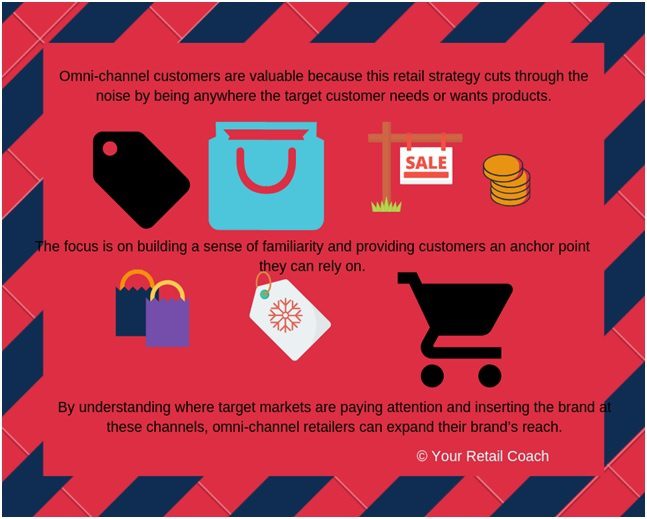
Retailers using omni-channel strategies avail benefits like a significant increase in annual revenue, lower cost per customer contact and higher customer retention rates.
Retailers can also use data to target customers in a more relevant and accurate manner, allowing a deeper relationship and fostering brand loyalty.
There’s also a credible sense of familiarity and a focus on peripheral vision. Brands ensure visitors are retargeted and brand advocacy and loyalty grow.
The objective of omni-channel retail goes beyond managing sales across channels. It also focuses on integrating all the channels so customers and sales individuals can gain an optimal functional range of sales capabilities and excel at the online experience.
#1 Greater Efficiency
One of the biggest benefits of an omni-channel retail strategy is that retailers offer consistent experiences to informed consumers across platforms. They cater to customer needs with a central database of products, offers, and prices. Consumers can experience the brand with promotions and products consistent across retail channels.
So, purchases in physical stores may be augmented by other channels to optimize digital and mobile experience. Brick-and-Mortar stores thus become extensions of the supply chain.
#2 Higher Margins
A well-designed online sales structure does away with the need for deep discounts. Omni-channel retailers can sell products at full prices and benefit from integrated channels that widen their reach to customers with deep pockets.
#3 Better Data
As a business enjoys visibility across a plethora of retail channels online and offline, this translates into more personalized customer experiences. When retailers can track clients across multiple channels, this makes way for more relevant offers and precision in marketing. Omni-channel retail lets businesses engage with customers better.
#4 Integrated Communication or Data Analysis
With omni-channel strategies, various information systems are available for business. Information streams are better understood for meeting customer demands. Further, analytics serves to comprehend, quantify and review communication with customers.
Omni-channel retailers also benefit from cross-channel capabilities.
Therefore, omni-channel retailing helps in the realigning of business operations, implementation of infrastructural changes and a pathway to attract, and retain customers, driving greater sales.
#5 Enhanced Customer Satisfaction
With the emergence of new customers or shoppers, retailers can develop and implement strategies using omni-channel retail that enables shoppers to switch between channels effortlessly. This enhances customer satisfaction. Customers expect integration and blurring of channels translates into a better and more fulfilling retail experience.
Giving shoppers a chance to buy from a convenient channel, omni-channel retail increases buying opportunities and provides customers with wider selections.
A well-framed omni-channel sales framework is essential for fostering customer trust as well.
#6 Building a Powerful Brand
Building a stellar brand from the start is difficult, given how competitive a marketplace is. Retailers having brick and mortar stores or online ones can control and regulate pricing power and achieve sales volume through omni-channel retailing.
#7 More Productivity
Omni-channel strategies allow efficiency and productivity to flourish. Click-and-mortar stores and retail outlets are more equipped to transform customer information into a loyalty-building service to boost retention, and increase productivity.
Omni-channel retailing offers a 360-degree view of purchases to serve customers better.
Breaking barriers between channels also ensures the customer is empowered and exercises convenient options in a way that boosts sales.
Centralization of data for omni-channel retailers further promotes accurate sales forecasts and demand sensing. This eliminates wasted inventory and costs linked to overproduction and warehousing of surplus products. Data centralization opens up ways to sell products on new channels. This helps in using inventory transparency between channels as well.
Future of Omni-channel
A majority of modern retailers agree omnichannel strategies are critical to business functioning. Omnichannel retailing helps to boost the lifetime value of customers, improve the buying experience and boost customer spending. Clearly, this integrated approach holds value. Future of omni-channel retail strategies is predicated on the state of advancing technologies and the growing value of personalization.
Omnichannel is Expected
Omni-channel retail is now expected, not just accepted. Technologies and innovation are marketing a new evolution. Retailers are looking to push the boundaries even more as they aim to create fully integrated ecosystems for customers to experience.
For years before, the only option shoppers had was to buy from brick-and-mortar stores. This changed with e-commerce stores which became a popular option due to their accessibility and convenience.
Better Buying Options
To access physical and digital buying options, multi-channel retail gave way to an omni-channel approach. The advent of online shopping marked the emergence of omni-channel pathways and provided customers with better buying options.
Omni-channel retail gives customers a smooth, integrated and seamless shopping experience.
Customer Retention
Companies with omni-channel engagement strategies retain a majority of their customers as against weak or non-existent integrated retail structures.
The more channels a customer uses to make a purchase, the more valuable they are to a retailer over the lifetime, as against mono-channel counterparts.
As more channels to purchase products and services will emerge, more touchpoints will become important.
Mapping Customer Journey
Traditional customer journeys were short and linear. As technologies advance, customers will seek more options at every stage of the purchase journey.
As the number of touchpoints rises, omni-channel customer journeys will be complex and extensive.
Product Discovery Reworked
Product discovery will be followed by extensive customer research. More customers will explore multiple avenues such as social media networks, e-commerce sites, and review sites before coming to a purchase decision.
The next phase of this evolution will mark the shift from omni-channel retail strategies to a fully-functioning complete omnichannel retail ecosystem for your business.
Exclusive Stakeholder Network
Omni-channel ecosystems will generate value through expansive and exclusive networks of vendors, partners, and digital services to offer shoppers a thoroughly seamless experience. From trying to give customers what they seek to actually succeed, the shift in omni-channel retail is data-driven.
Customers will have more options at digital checkouts. Soon, all elements of the buying process will be seamlessly interconnected. In an omni-channel ecosystem, the retail web will be expansive and intricate.
There will be a choice of multiple retail channels, market research and fulfillment, and payment options and integrated digital business tools. This helps to create a comprehensive, seamless omni-channel ecosystem.
Omni-channel ecosystems will soon be customized to suit retailers implementing strategies to cater to specific audiences and customer niches. The branding, corporate image and level of service across online channels and offline stores will soon be comparable, with the increasing sophistication of technologies. The entire customer experience will be seamless, effortless and intuitive.
Omni-channel will also achieve man-machine synergies, tapping digital technologies and workers to emerge as an omni-talent driven ecosystem.
Brands, Not Channels
Customers buy from brands and not channels. Businesses need to rethink customer engagement and how they provide a seamless experience by unifying the channels.
Focusing on cohesive user experience at every touchpoint, the focus will be on the big picture, and not just pieces of a puzzle. Brand narratives will evolve a distinct storyline that meets customers at the point where they are.
Engaging With Customers in Real Time
By engaging with customers in real time, higher conversion rates and more sales will bring retailers in the future solid ROI and profits that multiply.
But implementing an omni-channel retail approach requires having standardized frameworks in place and this is exactly where you need the services of a leading retail consultancy like Your Retail Coach. As a consultancy with strategic specialists and experts in the field of omni-channel retail, YRC can be a partner for bringing about positive transformation. Your retail business needs to capitalize on every advantage in this competitive marketplace. Align your retail business with strategies proposed by YRC and gain the winning edge you need to race past competitors and streamline your operations. E-commerce consultant YRC helps with omni-channel customer solutions. As a customer service consultant, Your Retail Coach offers impeccable services for the perfect solutions geared to meet the challenges of a growing business.

About Omni-channel
Omni-channel retail solution is all about providing contextual, unique and consistent brand experiences across multiple touchpoints including marketplaces, web, mobile, social, and brick-and-mortar. The focus is on allowing individual customers to purchase in line with a channel of their choice and it works on the basis of communicating in ways in tune with a given channel. Right from the sale to the unboxing experience, omni-channel retail marketing can impact client satisfaction in specific ways. Basic omni-channel user journey examines information in one sales channel to invite participation in another. When well implemented, omni-channel retail strategies ensure buyers seamlessly transition from one brand to another. As they evolve from buyer to loyal customers, your brand’s omni-channel strategies reflect where customers are in the journey. While multi-channel retailing focuses on companies selling through multiple online channels, omni-channel is a step ahead with retailers expanding their physical and digital presence both.
CASE STUDIES
Services Offered for
Omni-channel Retailers:
Get Advice for Business Consulting
Related Blogs
Making the most out of the festive season shopping: A Customer Perspective for Retailers
Decoding the Festive Shopping Spree For us, as customers, the festive season is a licence to spend. The vibes of festivity ushers with joy and a sense of celebration. This elevated mood often turns into an enhanced willingness to spend and indulge in shopping. It is a...
Mitigating Business Risks in Retail
Spotting the Swirls Sailing the stream of retail is canopying between opportunities on the surface and risks as the current of that stream. If the bad swirls are not spotted in advance, it can turn things undesirable. While big brands grapple with issues like lapses...
How Retailers are Enhancing Customer Experience (CX) with Hyper-Localisation
Hyper-localisation is an alignment strategy that helps retail brands and businesses mould into the requirements of a locality-based market environment. Marketing-wise, it helps retailers tailor their value propositions to cover the needs and expectations of highly...


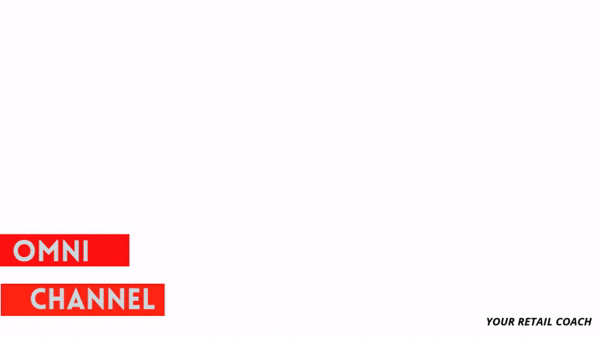
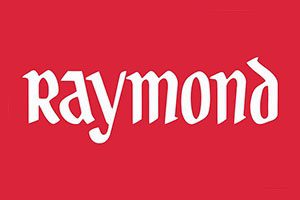

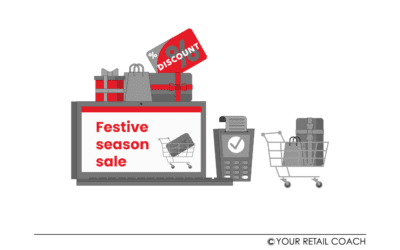
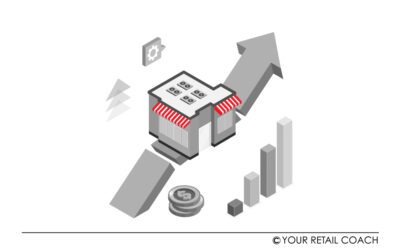

We work only for Visionaries.